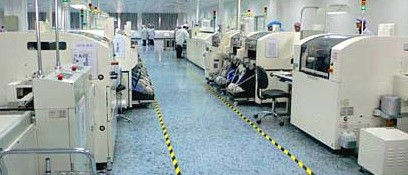- Min.Order :1 Kilogram
- Purity: 98% Min
- Payment Terms : L/C,D/A,D/P,T/T,Other
Keywords
127-40-2 C40H56O2 Xanthophyll 127-40-2 C40H56O2
Quick Details
- Appearance:white powder
- Application:One of the most widespread carotenoid alcohols in nature. Originally isolated from egg yolk, also isolated by chromatography from nettles, algae, and petals of many yellow flowers.
- PackAge:aluminium bag
- ProductionCapacity:10|Kilogram|Day
- Storage:keep in dry and ventilated place
- Transportation:By sea/By air
Superiority:
| Xanthophyll Basic information |
| Product Name: | Xanthophyll |
| Synonyms: | beta,;beta,e-carotene-3,;beta,e-carotene-3,3’-diol;epsilon-carotene-3,3’-diol,(3theta,3’theta,6’theta)-bet;xanthophyllfromalfalfa;α-Carotene-3,3'-diol;β, ε-carotene-3,3′-diol;beta,epsilon-carotene-3,3'-diol |
| CAS: | 127-40-2 |
| MF: | C40H56O2 |
| MW: | 568.87 |
| EINECS: | 204-840-0 |
| Product Categories: | Carotenoids;Natural Plant Extract;Chiral Reagents;Intermediates & Fine Chemicals;Pharmaceuticals;Retinoids;Plant extract;Feed or food Grade |
| Mol File: | 127-40-2.mol |
|
|
|
| Xanthophyll Chemical Properties |
| mp | 183℃ |
| storage temp. | −70°C |
| Merck | 13,10120 |
| CAS DataBase Reference | 127-40-2(CAS DataBase Reference) |
| EPA Substance Registry System | .beta.,.epsilon.- Carotene-3,3'-diol, (3R,3'R,6'R)-(127-40-2) |
| Safety Information |
| Hazard Codes | Xi,F |
| Risk Statements | 36/37/38-11 |
| Safety Statements | 26-37/39-16-7 |
| WGK Germany | 3 |
| F | 1-8-10-16 |
| MSDS Information |
| Provider | Language |
|---|---|
| alpha-Carotene-3,3'-diol | English |
| SigmaAldrich | English |
| Xanthophyll Usage And Synthesis |
| Carotenoids |
Xanthophyll is a type of carotenoid, which belongs to photosynthetic pigments and naturally widely presents in vegetables (such as spinach, kale, broccoli, etc.), flowers, fruits and other plants. It can absorb and transfer light energy to Chlorophyll a at a particular state to convert light energy. It plays a role in protecting chlorophyll. Pure Xanthophyll is a rhombus yellow crystal with metallic luster, and it is unstable when exposed to light and hydrogen, insoluble in water and easily soluble in grease and fatty solvents. It shall be stored in a cool dry place, away from light and air. Xanthophyll is the most important nutritive component in human retina. There is a high concentration of Xanthophyll in macula (central vision) and lens of the eye retina. The human body cannot synthesize Xanthophyll itself, and it must be taken up from food. After breaking through all difficulties, Xanthophyll goes into the lens and macular to perform antioxidant effects, and neutralize harmful free radicals, and filter out the blue light (which is harmful to the eye), and avoid oxidation damage to eyes caused by sunlight. Natural Xanthophyll is an excellent antioxidant, which can prevent cell senescence and body organs aging when added to food with an appropriate amount. It can also prevent eyesight degeneration and blindness that caused by age-related retina macular degeneration, and can also be used as feed additives for staining of poultry meat and eggs, as well as a colorant and dietary supplements in food industry. Carotenoids are the generic terms of an important kind of natural pigments, belonging to compounds. The yellow, orange or red pigments that commonly found in animals, higher plants, fungi, algae and bacteria are mainly β- carotene and a- carotene, hence the name. Since carotene was isolated in the early 19th century, there are more than 600 known carotenoids in nature, of which only about 20 kinds present in the human blood and tissues. Carotenoids that found in human body include d-carotene, P-carotene, cryptoxanthin, xanthophyll, lycopene and zeaxanthin, and they are insoluble in water and soluble in fats and fatty solvents. |
| Which food is Xanthophyll rich |
Xanthophyll is rich in some green vegetables and fruits such as cabbage, spinach, lettuce, green beans and rapes, but chlorophyll, β- carotene and other epoxy carotenoids and oxygen substituted derivatives of carotenoids are also rich in such plants, making is not easy to extract the pure xanthophyll. After long-term searching, people found very high levels of Xanthophyll and zeaxanthin and less impurities of other carotenoids in flowers of marigold, which makes separation and purification easy, thus marigold can be a good source for industrial production of Xanthophyll. In addition, this product and zeaxanthin are also rich in some yellow-orange fruits such as mango, papaya, peaches, and pumpkins. The above information is edited by the Chemicalbook of Cheng Jingmin. |
| Function |
Protection of eyesight Xanthophyll plays an important role in protecting the macula of the retina. The absence of Xanthophyll can easily cause macular degeneration and blurred vision, and with the further symptoms of vision degeneration, myopia and so on. Xanthophyll is a precursor of NA, and it can be transformed into VA in the human body. The main physiological function for eyes of Xanthophyll is as antioxidants and light protectors. Optic nerves are non-renewable and highly vulnerable to harmful free radicals, and the antioxidant effects of Xanthophyll can inhibit the formation of harmful free radicals. Xanthophyll can absorb a large number of blue visible lights, which have the close wavelengths to ultraviolet lights and are a kind of harmful lights that can reach the retina and with the largest potential hazardous. Before reaching the sensitive cells of the retina, the light goes through the most heavily gathering area of Xanthophyll. If Xanthophyll is rich now, the damage can be lower to the minimum. Reducing the incidence of cataract Cataract is the major eye disease causing of blindness in the world. Recent studies showed that by increasing the intake of Xanthophyll, the incidence of cataracts can can be reduced. So far, the mechanism is that the lower density of macular pigment is closely related to the higher lens visual density in the elders, and the higher the lens visual density is considered to be a obvious feature of cataract. The antioxidant effect Xanthophyll has strong antioxidant effect, and it can inhibit the activity of reactive oxygen species and prevent its damage to normal cells. Related experiments showed that reactive oxygen species could react with DNA, proteins, lipids, and weaken their physiological functions, and thus cause diseases such as cancer, atherosclerosis, and age-related macular degenerative disorders. Xanthophyll can quench singlet oxygen physically or chemically, thereby protecting the body from injury and enhancing the body's immunity. Retarding atherosclerosis Recent research results showed that Xanthophyll has a retarding effect on early process of atherosclerosis. The main reason is the relationship between the intimal thickness of the main artery blood vessels and the content of Xanthophyll in blood. Low content of Xanthophyll in blood can easily cause thickening of arterial walls. With the increasing content of Xanthophyll, the trend of arterial wall thickening decreases significantly. Meanwhile, the Xanthophyll in arterial wall cells can reduce oxidation of LDL cholesterol. Anticancer effects Several studies have shown that Xanthophyll can inhibit a variety of cancers, such as breast cancer, prostate cancer, colorectal cancer, and skin cancer. According to a recent pharmaceutical research of New York University School, there is a very close relationship between reducing the incidence of breast cancer and the amount of Xanthophyll intake, and the survey found that the incidence of breast cancer in the group with a low intake of Xanthophyll was (2.08 - 2.21) times higher than the group with a high intake of Xanthophyll. This effect role may be related to indirect immunomodulatory of synergy with other organs and tissues. The study concluded that dietary intake of Xanthophyll can inhibit neoplasms and may even play a role in cancer prevention. It is recommended daily intake of 400 g ~ 600 g fruits and vegetables per capita can make reduce the relative risk of cancer by 50%. |
| Identification test |
Xanthophyll is not dissolve in water, but soluble in hexane. Spectroscopy: The chloroform solution has the maximum absorption at about 445nm. Chloroform solution turns to blue coloration when adding an excess of Cart-Price test solution. Toxicity: not limited by ADII yet (FAO / WHO, 2001). |
| Who needs Xanthophyll supplements |
1. People who use computer for long time 2. People with dry eye syndrome 3. People whose eyes are easily fatigue with tears 4. People with retinal degeneration that caused by degradation of renal function 5. People with high myopia 6. People with degenerative macular area lesions 7. People who received Laser Surgery 8. People with diabetic retinopathy |
| Production methods | Xanthophyll is derived from the extraction of pasture or alfalfa, in which chlorophyll was removed through saponification. and then Xanthophyll was purified with a solvent and then desolventized. The solvent used is methanol, ethanol, isopropanol, hexane, acetone, methylene chloride and methyl ethyl ketone, according to the specified rules of FAO / WHO (1997). |
| Usage | One of the most widespread carotenoid alcohols in nature. Originally isolated from egg yolk, also isolated by chromatography from nettles, algae, and petals of many yellow flowers. |
| Xanthophyll Preparation Products And Raw materials |
| Raw materials | Isopropanol-->2-Butanone-->D(+)-Glucose-->Poly(dimethylsiloxane)-->Dichlorodimethylsilane-->Hexamethyldisiloxane |
Details:
1, High quality with competitive price:
We are manufacturer and can provide excellent quality products with factory price.
2, Fast and safe delivery
1) Parcels can be sent out within 24 hours after payment. Tracking number is available.
2) Secure and discreet shipment. You have various choices of transportation methods.
3, We have clients throughout the world.
1) Professional service and rich experience make customers feel at ease, adequate stock and fast
delivery meet your desire.
2) Market feedback and goods feedback are appreciated, meeting customers's requirement is our
responsibility.
3) High quality, competitive price, fast delivery, first-class service gain the trust and praise from the
customers.
4. Established time: June. 1998 (16 years experience in manufacturing & exporting chemical raw material )
5. Exported areas: Europe , southeast Asia , the Middle East , Africa , South America and some other
countries and areas.
6. Business scope: Organic & Inorganic Chemicals , Pigments & Dye stuffs , Water treatment chemicals
, Intermediates, Food & FEED additives and others.
7. Company advantages: A strong R & D team, professional engineers and scholars with PhD.
8. Reliability: Provide demanded goods and professional services.
9. Welcome any serious inquiries from customers around the world, and sincerely hope to cooperate
with you for a brilliant future.
10. Have exported to many countries around the word and received high praise.
11. Have our own R&D group.
12. Location of HenNan Sunlake enterprise corporation: Henan Province , The central plain of China.


You Might Also Like
-
CAS:5437-98-9 C11H13NO3
CAS NO:5437-98-9
-
technical grade CAS:110-44-1 C6H8O2 Sorbic Acid
CAS NO:110-44-1
-
free samples 1181972-37-1 NO.1 factory
CAS NO:1181972-37-1
-
9004-32-4 factoty price C6H7O2(OH)2OCH2COONA
CAS NO:9004-32-4
-
Offer CAS:9002-89-5 Poly(vinyl alcohol) C2H3 * 99% purity
CAS NO:9002-89-5
-
591-80-0 C5H8O2 Allylacetic acid
CAS NO:591-80-0
Related Searches
About|Contact|Cas|Product Name|Molecular|Country|Encyclopedia
Message|New Cas|MSDS|Service|Advertisement|CAS DataBase|Article Data|Manufacturers | Chemical Catalog
©2008 LookChem.com,License: ICP
NO.:Zhejiang16009103
complaints:service@lookchem.com Desktop View